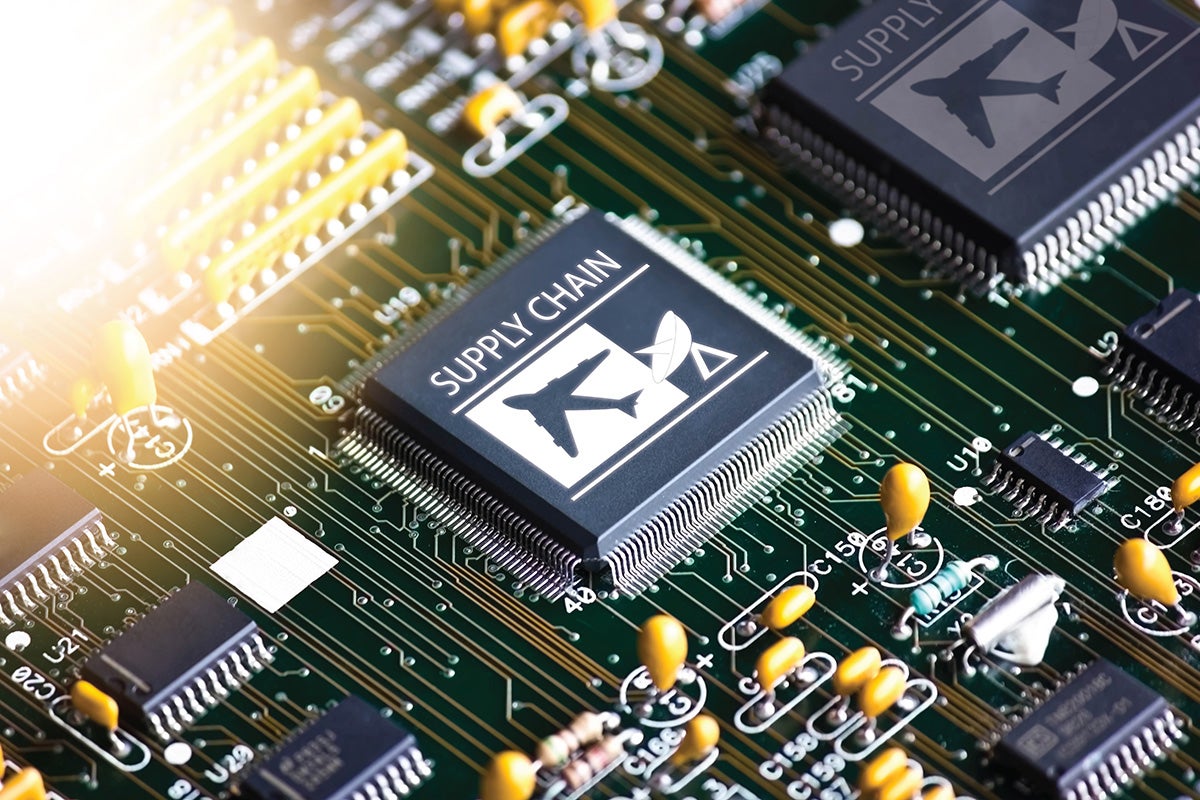
Electronic component lead times rebounded in the first quarter of 2024 due to supply chain resiliency improvements instituted.
Supply chain delays for electronic components have been exacerbated by a combination of factors, including the COVID-19 pandemic, which disrupted global manufacturing and logistics, and the increasing demand for electronics due to remote work, digital transformation, and the rise of electric vehicles. Key challenges included electronic component shortages, delays in shipping, and a lack of raw materials, such as rare earth elements.
Geopolitical tensions, particularly between the U.S. and China, and a lack of distributed manufacturing further strained supply chains by disrupting trade flows, leading to longer lead times. However, electronic component lead times for 2024–especially, for special part types–came down dramatically compared to 2023 turnaround times, due to focused efforts like increased production and more stable inventory levels by distributors.
Electronic Component Lead Times 2024: Year-Over-Year Comparison
The table below, entitled Electronic Component Lead Times 2024, details the changes.
| Electronic Component Lead Times 2024 | |||
| Components | Q1 2023 Lead Time (Weeks) | Q1 2024 Lead Time (Weeks) | Change |
| DDR3/LPDDR3 | 22-30 | 9-16 | -59% (low end)
-46% (high end) |
| DDR4/LPDDR4 | 20-30 | 9-16 | -55% (low end)
-46% (high end) |
| Flash-NAND | 22-26 | 10-15 | -54% (low end)
-42% (high end) |
| SSD | 9-13 | 9-13 | No change |
| Advanced Analog | 28-36 | 23-41 | -18% (low end)
-14% (high end) |
| Passives | 20-35 | 19-37 | -5% (low end)
+6% (high end) |
| Interconnect | 16-22 | 15-20 | -6% (low end) -9% (high end) |
Data from Sourcengine’s Q1 2024 Electronic Components Lead Time Report
The Sourcengine report also found evidence that lead times and prices will likely increase for DDR3/LPDDR3, DDR4/LPDDR4, SSD, and Flash-NAND in the remainder of 2024. These predictions are based primarily on estimated increases in demand and market uncertainty, which could lead to supply shortages for these components once again.
Electronic Component Market to See Double-Digit Growth
The increasing demand for electronic components, particularly semiconductors, is expected to continue throughout 2024 and into 2025.
World Semiconductor Trade Statistics (WSTS) forecasts the semiconductor industry will grow 16.0 percent this year and reach $611 billion in 2024. The organization revised its growth estimate due to stronger performance in the last two quarters. Most of this growth is driven by specific categories like logic chips and memory, while other sectors, such as optoelectronics, sensors, and analog semiconductors, are expected to see declines. Increased demand could lead to supply shortages if component manufacturers do not increase production to compensate.
| WSTS Semiconductor Market Growth Forecast (By Sector) | |||
| Components | Market Value 2024 (US$M) | Market Value 2025
(US$M) |
Year-on-Year Growth (%) |
| Discrete Semiconductors | 32,773 | 35,310 | 7.7 |
| Optoelectronics | 42,736 | 44,232 | 3.5 |
| Sensors | 18,265 | 19,414 | 6.3 |
| Analog ICs | 79,058 | 84,344 | 6.7 |
| Micro ICs | 77,509 | 81,611 | 5.2 |
| Logic ICs | 197,656 | 218,189 | 10.4 |
| Memory ICs | 163,153 | 204,281 | 25.2 |
| Total Products | 611,231 | 687,380 | 12.5 |
For 2025, WSTS expects a 12.5 percent growth in the global semiconductor market, reaching $687 billion in market value. This growth will also be driven by logic chips and memory, which are forecast to grow at more than 10 percent and 25 percent, respectively, to reach more than $200 billion next year. Other sectors are expected to grow in the single digits.
Overall, electronic component lead times for 2024 are improving, which is welcome news for all, as the effects of the often severe supply chain disruptions faced by the electronics industry over the last several years decline. However, with growth comes more competition. Consequently, it is more important than ever that IC manufacturers employ effective marketing strategies to connect with potential clients.
Irrespective of whether your goal is to convince seasoned designers to try new products or introduce your brand to the next generation of engineers, to be most effective your strategy must use the channels that your audience does, tap into the engineering mindset, deliver engaging content, and include easy access to distribution sources for your products and the design tools, like accurate CAD models, necessary to implement them. With Ultra Librarian, you have access to the largest online engineering audience in the industry affording you the greatest ability to connect with those who need and use your products.
Discover how Ultra Librarian helps manufacturers. With services and resources tailored to streamline CAD creation and amplify part downloads, Ultra Librarian empowers manufacturers to boost productivity and drive part downloads. By leveraging these tools, manufacturers can achieve greater success in today’s competitive market landscape.






